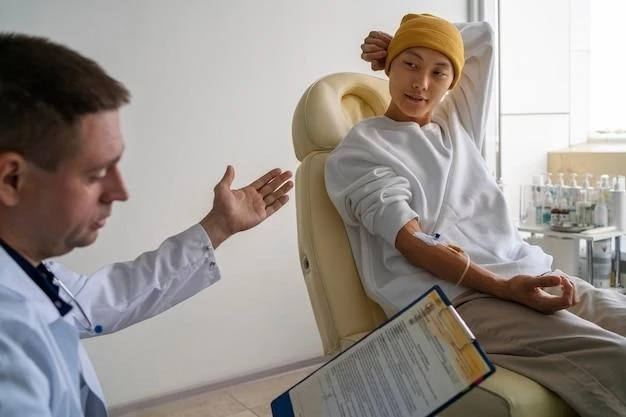Disease ー Lowry-MacLean Syndrome
I. Overview of Lowry-MacLean Syndrome
Lowry-MacLean syndrome is a rare genetic disorder characterized by a range of developmental and physical symptoms. Individuals with this syndrome often experience neurodevelopmental delays, intellectual disabilities, speech impairments, and connective tissue abnormalities.
One of the distinct features of Lowry-MacLean syndrome is facial dysmorphism, which can include a broad forehead, hypertelorism (wide-set eyes), a short nose with a depressed nasal bridge, a smooth philtrum, and a thin upper lip. Additionally, individuals with this syndrome may experience seizures, further adding to the complexity of the condition.
Due to its rarity, diagnosing Lowry-MacLean syndrome can be challenging. Genetic testing is often required to confirm the presence of specific gene mutations associated with the syndrome. Clinicians rely on a combination of clinical evaluation, medical history review, and specialized tests to reach a conclusive diagnosis.
There is currently no cure for Lowry-MacLean syndrome, and treatment focuses on managing the individual symptoms and providing supportive care. Early intervention services, speech therapy, occupational therapy, and educational support are commonly utilized to help individuals with this syndrome reach their full potential.
Research opportunities in Lowry-MacLean syndrome are essential for advancing our understanding of the condition and potentially identifying new treatment approaches. Studies focusing on the genetic basis of the syndrome, neurodevelopmental pathways, and potential targeted therapies are crucial for improving outcomes for affected individuals.
II. Clinical Features of Lowry-MacLean Syndrome
Lowry-MacLean syndrome presents with a spectrum of clinical features that contribute to its distinct diagnostic profile. Individuals affected by this syndrome commonly exhibit neurodevelopmental delays, which can manifest as delays in reaching developmental milestones such as sitting, crawling, walking, and speaking.
Intellectual disability is a hallmark of Lowry-MacLean syndrome, with varying degrees of impairment observed among affected individuals. This condition can impact cognitive functioning, adaptive skills, and overall daily functioning.
Speech impairment is prevalent in individuals with Lowry-MacLean syndrome, affecting both expressive and receptive language abilities. Speech therapy is often a critical component of the multidisciplinary approach to managing this aspect of the syndrome.
Connective tissue abnormalities, such as joint hypermobility and skin laxity, are common in individuals with Lowry-MacLean syndrome. These features can contribute to joint instability, chronic pain, and other musculoskeletal issues.
Facial dysmorphism, characterized by distinctive facial features including a broad forehead, wide-set eyes, a short nose with a depressed nasal bridge, a smooth philtrum, and a thin upper lip, is a recognizable trait seen in many individuals with Lowry-MacLean syndrome.

Seizures can also occur in individuals with Lowry-MacLean syndrome, further complicating the clinical presentation of the condition. The types and severity of seizures can vary among affected individuals, highlighting the importance of individualized medical management.
III. Diagnosis of Lowry-MacLean Syndrome
Diagnosing Lowry-MacLean syndrome often involves a comprehensive approach that combines clinical evaluation, genetic testing, and consideration of the individual’s medical history. The rarity and complexity of the syndrome necessitate thorough assessment by healthcare professionals with expertise in genetic disorders and developmental conditions.
Genetic testing plays a crucial role in confirming a suspected diagnosis of Lowry-MacLean syndrome. This typically involves analyzing specific genes associated with the syndrome to identify any pathogenic variants or mutations. Genetic counseling is essential for individuals and families undergoing testing, as it provides information on inheritance patterns, recurrence risks, and family planning options.
Clinical evaluation of the individual may include a thorough physical examination to assess for characteristic features of Lowry-MacLean syndrome, such as facial dysmorphism, connective tissue abnormalities, and neurological signs. Developmental assessments, cognitive testing, and speech and language evaluations can further support the diagnostic process.
Reviewing the individual’s medical history is crucial in identifying any developmental delays, intellectual disabilities, seizures, or other symptoms that align with the clinical features of Lowry-MacLean syndrome. Information on family medical history can also offer insights into potential genetic predispositions.
In cases where the diagnosis remains unclear despite initial evaluations, additional testing such as imaging studies (e.g., MRI, CT scans) or specialized laboratory tests may be recommended to rule out other conditions and further characterize the individual’s presentation. A multidisciplinary team approach involving geneticists, neurologists, developmental specialists, and other healthcare providers is often beneficial in the diagnostic process.
IV. Treatment Approaches for Lowry-MacLean Syndrome
Managing Lowry-MacLean syndrome involves a multidisciplinary approach aimed at addressing the wide range of symptoms and challenges associated with the condition. While there is no cure for the syndrome, various treatment modalities can help improve quality of life and functional outcomes for affected individuals.
Early intervention services play a critical role in supporting individuals with Lowry-MacLean syndrome. These services may include physical therapy, occupational therapy, speech therapy, and developmental interventions tailored to the individual’s specific needs. Early detection and intervention can significantly impact developmental trajectories.
Speech therapy is often a key component of the treatment plan for individuals with Lowry-MacLean syndrome who experience speech impairments. Speech therapists work on improving communication skills, language development, and overall oral motor function to enhance the individual’s ability to express themselves effectively.
Occupational therapy can help individuals with Lowry-MacLean syndrome improve their fine motor skills, sensory processing abilities, and activities of daily living. Occupational therapists develop personalized strategies and interventions to promote independence and maximize functional abilities.
Behavioral interventions and educational support are essential for individuals with Lowry-MacLean syndrome to address behavioral challenges, learning difficulties, and social skills deficits. Individualized education plans (IEPs) and specialized educational environments can provide tailored support to optimize learning outcomes.
Medical management of seizures, if present, is an important aspect of treatment for individuals with Lowry-MacLean syndrome. Antiepileptic medications may be prescribed to help control seizure activity and improve the individual’s quality of life. Close monitoring by a neurologist is typically necessary.
Social support services and community resources can also be beneficial for individuals and families coping with the challenges of Lowry-MacLean syndrome. Support groups, counseling services, and respite care programs can offer emotional support and practical assistance to enhance overall well-being.
V. Research Opportunities in Lowry-MacLean Syndrome
Research in Lowry-MacLean syndrome presents numerous opportunities for advancing our understanding of the condition, identifying novel treatment strategies, and enhancing the quality of life for affected individuals. Key areas of research focus on the genetic basis of the syndrome, neurodevelopmental pathways, and potential therapeutic interventions.
Genetic studies play a crucial role in unraveling the underlying genetic mechanisms of Lowry-MacLean syndrome. Identifying specific gene mutations associated with the syndrome can provide insights into the molecular pathways involved in neurodevelopmental delays, intellectual disabilities, and other clinical features.
Advances in genomic technologies, such as whole exome sequencing and next-generation sequencing, have enabled researchers to more efficiently identify genetic variants in individuals with rare genetic disorders like Lowry-MacLean syndrome. Continued research in this area may lead to the discovery of new genetic targets for potential therapies.
Exploring the neurodevelopmental pathways affected by Lowry-MacLean syndrome is another critical research avenue. Understanding how the genetic mutations impact brain development, neural circuits, and cognitive function can shed light on the diverse clinical manifestations of the syndrome and inform targeted interventions.
Preclinical and clinical research studies focused on potential therapeutic approaches for Lowry-MacLean syndrome are essential for advancing treatment options. Investigating pharmacological interventions, gene therapies, and other innovative strategies could help improve outcomes for individuals with the syndrome.
Longitudinal studies tracking the developmental trajectories of individuals with Lowry-MacLean syndrome can provide valuable data on the natural history of the condition, treatment efficacy, and factors influencing outcomes. These research initiatives contribute to evidence-based practices in clinical care.
Collaborative research efforts involving multidisciplinary teams, including geneticists, neurologists, developmental specialists, and researchers from various disciplines, are instrumental in driving progress in the field of Lowry-MacLean syndrome. By sharing knowledge, resources, and expertise, researchers can work towards holistic understanding and management of the syndrome.
